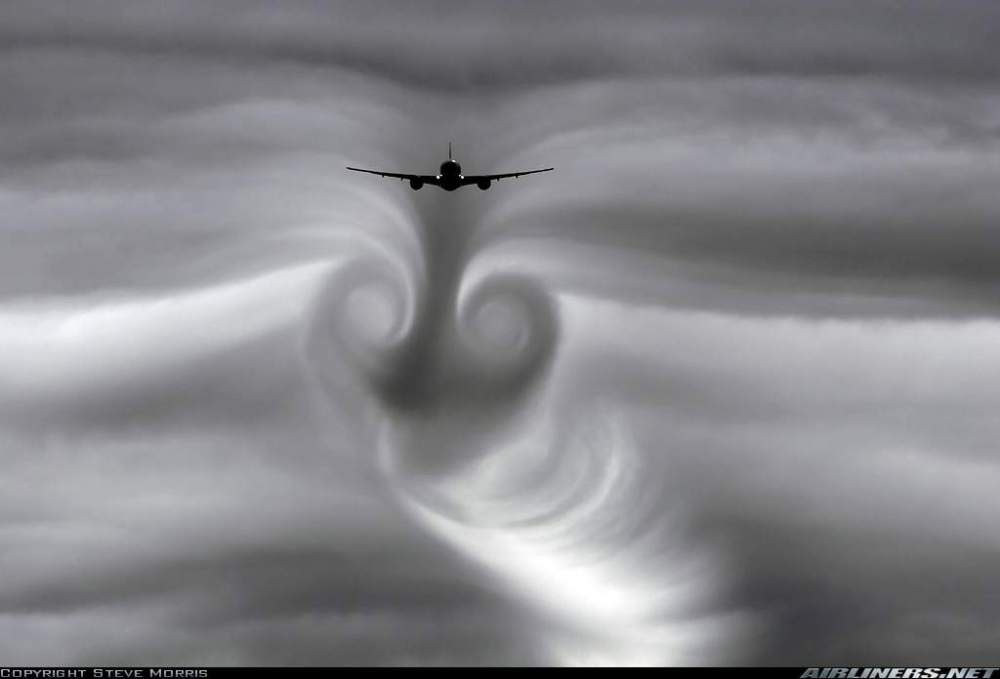-
Posts
95 -
Joined
-
Last visited
About Cargil48
- Birthday 08/24/1948
Profile Information
-
Gender
Male
-
Location
Portugal, Europe
-
Interests
Aviation
Recent Profile Visitors
701 profile views
Cargil48's Achievements
-
This includes EricJ also... Why did I say I did not agree? Because of this phrase from @Blue on Top: "Whether the airplane is fast or slow doesn't matter." IMHO it does, because faster airplanes (with the same airfoil on the wing) get more lift than slower ones. And changing AoA, also... Number two: I mentioned the two (for me...) different aspects making a wing getting "that up movement": the famous delta P (I think now everyone knows here what that means...) and that example Peter Garrison wrote down, the surface in the slipstream getting up or down according to the AoA (the boy's hand). For me, two different aspects, totally different! One is one aspect of physics: the delta P. The other one is another aspect of physics, the reaction of a fluid to the incidence of a given surface. Example: You deflect the rudder on your plane to one side, the tail gets to the opposite side. That has zero to do with lift but with deflection and reaction to that deflection. And the faster your airplane goes the stronger the reaction to your input will be... Did I explain myself correctly? (I wonder what kind of lift Santa is getting in his flying sleigh... )
- 304 replies
-
- 1
-

-
- aerodynamics
- airflow
-
(and 2 more)
Tagged with:
-
Hi, Ron Thanks for the reply. We do not agree on this one, nor is it a reply to the two points I mentioned. But I do not want make this a never ending story, also (or because) you are the expert, not me, so... Regards, Carlos
- 304 replies
-
- 1
-

-
- aerodynamics
- airflow
-
(and 2 more)
Tagged with:
-
How many articles of Flying I've read back some two decades ago... Peter Garrison, Richard Collins, McClellan and many others... But back to the point. I'm going maybe to abuse of your patience, but reading the above post something popped into my mind: Maybe there are two different effects which makes a wing go up, one called lift and second one simply deflection. Lift is created by the mentioned delta P, that example Peter Garrison mentioned in his article with the boy holding his flat hand out of the window of a moving car is - may I say so? - not lift but the effect of deflection. Okay, both effects have the same outcome, they make the wing go up, but I think (maybe it's an evidence, but I'm no expert, as already said) we have to separate the two vectors. Many airplanes may need both factors, the heavier and the slower ones; others don't, the very fast ones and those having enough horsepower creating force through their propeller's blades. Let's see which kind of answers I may get now...
- 304 replies
-
- 1
-

-
- aerodynamics
- airflow
-
(and 2 more)
Tagged with:
-
Guys, you are all experts, I'm not. But I've read a long time ago a very simple explanation. Air is a sum of very tiny particles, trillions of it in every square meter... Suddenly an airfoil shows up, travelling at a certain speed, and brings as lot of turmoil to this mass of air. Now let's think of two "twin particles", a and b, sitting just side by side up there. They are hit by the leading edge and get separated. a goes straight along the lower surface as the airfoil passes through the place, and b is separated from its "twin sister" and goes the upper path. Since this upper part is curved, b has to travel more than a to get united with it again at the trailing edge. This difference of speed creates a difference in pressure, "delta P", creating a low pressure area on the upper side, thus causing sort of a suction effect. We call that lift. This we all know by heart since we were kids dreaming of becoming pilots one day... What we didn't know then and know now is that the problem starts at the wing's tip, where still air, not disturbed by any airfoil is met by airflows which have been disturbed by the difference in speeds along a path as shown in the pic I made. So, this makes the "still air" needing to "fill in" the low pressure area over the far end part of the wing. And this creates the famous vortices. To prevent this, we need a device to avoid this happening. That outer, still air layer, shall meet the other layer, which had been disturbed, more aft, when this latter one has been "pacified" after the airfoil has passed... Now, how we design that device we call "winglets" depends on some variables, most of all speed of the airfoil (wing), shape and area. Obviously a wing traveling at Mach .85 requires a different design than the one of a Mooney M20... Excuse my layman's way of putting it, but this is how I've gotten it explained long ago...
- 304 replies
-
- aerodynamics
- airflow
-
(and 2 more)
Tagged with:
-
Thanks for the suggestion but I have only a normal laptop for my entertainment (I'm retired already) with only simple programs coming with W10... And the ideas I write down here come into my mind as I read other people's comments, here... If I still had my big scale r/c sailplanes, I might then make experiences... but now I have only one way to go: follow my logic and make you my judges... Regards, Carlos
- 304 replies
-
- 2
-

-

-
- aerodynamics
- airflow
-
(and 2 more)
Tagged with:
-
While you were writing this, I was drawing my idea of a possible good solution for a winglet. It is in reality a design which is not new but in the existing form it follows the contour of the wingtip, i.e. it has the same width of the tip of the wing. My idea is the other way round, making it longer, to allow a bigger separation between the lower pressure area (up side of the wing) and the high pressure area (lower part of the wing). This would allow more area for the delta P to equalize without creating these huge vortices. And since (in my idea) the upper part of the winglet and the lower part (the fence) would be thin (sharp) but very strong (carbon fiber??) although bigger than usual, it would create low resistance to the passing air. Two pics: One the original, the second one my idea. Call me nuts, if you wish...
- 304 replies
-
- 1
-

-
- aerodynamics
- airflow
-
(and 2 more)
Tagged with:
-
A fantastic pic about a big plane (without winglets) flying through thin cloud layers. The big vortices are the effect of the lift inducing difference of pressure between the upper and the lower parts of the wings.
- 304 replies
-
- aerodynamics
- airflow
-
(and 2 more)
Tagged with:
-
About the effect of wingtips https://aviation.stackexchange.com/questions/2111/what-do-winglets-do-to-increase-aircraft-performance/2113#2113
- 304 replies
-
- aerodynamics
- airflow
-
(and 2 more)
Tagged with:
-
A full composite Mooney. Possible or not?
Cargil48 replied to Cargil48's topic in General Mooney Talk
To make proof that you can get a (apparently) very good used Bravo for 150k, have a look here: "Only Two Owners, Professionally maintained and operated, Always Hangared" https://www.controller.com/listings/aircraft/for-sale/26618273/1989-mooney-m20m-bravo -
A full composite Mooney. Possible or not?
Cargil48 replied to Cargil48's topic in General Mooney Talk
I must add here that to have a minimum of serious underlying thinking, it would be mandatory for me to use the "dream Mooney" mostly for professional reasons (for tax deduction purposes). To fly for fun just on weekends, I'd go rather the other way I described also, getting a good used one (around 150/170k) and make the steps described above as well. -
A full composite Mooney. Possible or not?
Cargil48 replied to Cargil48's topic in General Mooney Talk
And that, my friend, would increase the final price by how much?? -
A full composite Mooney. Possible or not?
Cargil48 replied to Cargil48's topic in General Mooney Talk
No. My "dream" Mooney would have 250 to 280hp from a turbo intercooled engine. Like the Lycoming TIO-540-C1A (250 hp) or the TIO-540-AF1B (270hp) from the Bravo TLS. Flying with turbocharged engines gives you an immense power reserve and flexibility. You need power? Boost it up. You want flying more economical? Boost down until you get the desired FF... The prop would most likely be the MT-600-Series Full Carbon Blade one. -
A full composite Mooney. Possible or not?
Cargil48 replied to Cargil48's topic in General Mooney Talk
Well, I tell you... 1. Left side door and, to make this work, bigger windows in front and accordingly slightly smaller in the rear; 2. Bended winglets sort of "sailplane style"; 3. LE slats to lower the approach and landing speeds; 4. Hinged flaps (you know what there are for so I don't need to go into details); 5. Two full wrapping ducts for the exhausts, one each side of the front LG doors. If you look carefully, there is a small opening on the front side of these ducts. Why? To get the same effect as in the fanjet engines: cool air flowing in and around the exhaust nozzles (or tubes, here), lowers the noise levels. Here, in this case, the rapidly flowing air through the ducts creates also sort of an extraction effect of the (slower) air inside the engine compartment. From cooling the cylinder heads, the turbo intercoolers and from the oil radiator. And I'd like a fully digital controlled engine from Lycoming also... 6. The antennas on the roof. Look guys, my reasoning is the following: Complex airplanes are expensive. Just like complex cars... With today's enormous technological advance, a pilot flying IFR on any GA airplane is very close to a professional guy flying a big plane. The vast amount of information the pilot(s) get nowadays make it mandatory for them to have a huge knowledge to extract all the capabilities of the GA planes they get. Even if it's an Archer LS, it has the same panel technology as the others... Being this so, I only think of changing to a new airplane if I can afford today's technology. Otherwise I buy an used one with some 20 years on it and spend some 100/150 grand making a really deep overhaul of all systems, add some of the smaller digital instruments which fit into the holes of analog ones and get a new paint and interior at my wish. Then I'll have a good, reliable and beautiful Mooney for, say, some 400k bucks or so. If I took the care to get the plane inspected beforehand mainly for corrosion and none was found, I'd have a plane for another 20 years (if in 20 years from now they'd allow us to burn avgas or even mogas... Let's see what you all think of it... "Babbling", of course, but... Carlos -
A full composite Mooney. Possible or not?
Cargil48 replied to Cargil48's topic in General Mooney Talk
Me neither... I even took a drawing from "Scheme Desiners" and drawed carefully some changes I'd make... Let's see 1. If you like it and 2. If you find out the changes I did... -
" "Rolls-Royce has discovered costly technical problems with a set of its engines, just weeks after it found a separate durability issue. The engine maker said the fault affected a “small number” of its Package B Trent 1000 engines, adding to problems with its Package C Trent 1000 engines, revealed in March." https://www.independent.co.uk/news/business/news/rolls-royce-jet-engine-problems-fault-plane-trent-1000-a8393006.html








